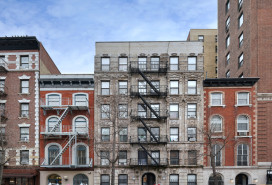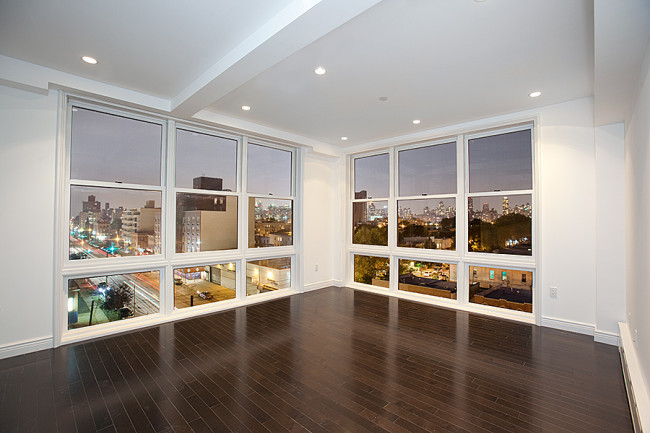Buying a condo in NYC? Here's how to tell if new construction is quality construction
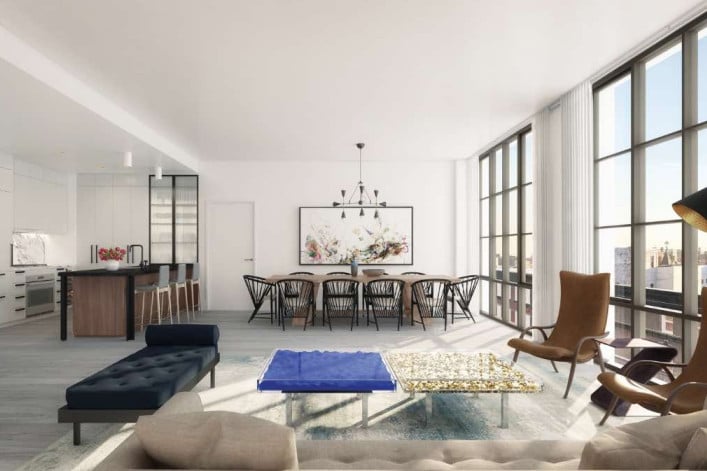
Steiner developments like this one in the East Village include sound reduction measures such as soundproof windows, two layers of sheetrock in hallways, air gaps in elevator walls, and additional soundproofing between apartments.
Prospective buyers of apartments in new buildings in New York are faced with more choices than ever before. Beyond the questions of how big an apartment you're looking for, at what price, and in what neighborhood, new construction brings the added variable of whether the construction work is any good. No seller or landlord is going to tell you his or her work is shoddy, but choosing wrong can turn your dream apartment into years of headaches and expensive contractors. So how do you know you're getting quality construction in a brand spanking new building?
We asked around. Here's what to look for, and what to ask.
Engage your senses
The quality of the construction of a building isn't just reflected in what you can see. It's also in what you feel, hear (or don't hear), and even smell, and you should start evaluating at the front entrance.
"Your experience should be a good one from the first door knob you touch," says Steve Glascock, president and managing partner of Anbau, a condo developer with projects including Citizen360 and 207W79. Glascock encourages prospective buyers to take a deep breath upon walking into his company's buildings, because their duct work goes up to the roof for a supply of air that is then double-filtered.
"It makes a big difference to people," he says.

Sound advice
One of the biggest issues affecting quality of life in any building is noise, and solid construction will incorporate multiple ways to protect residents from errant sounds, from any number of sources—the street, the neighbors, your own kids in the next room. Everyone we spoke to talked about the importance of noise control.
"It's part of what makes urban living easy or hard," says Doug Steiner, president of Steiner Equities Group.
"People don't think about it when they're looking," says Russell Goss, an architect, licensed contractor, and CEO of New York City-based Blueberry Builders. "Then they move in and their neighbor flushes the toilet and they hear it and they have to deal with it."
Quality windows, specifically soundproof windows, will help cut external noise.
"We live in a busy urban city, but that doesn't mean we have to listen to traffic in our apartment," Glascock says.
Anbau buildings have acoustically attenuated windows, which reduce noise with three layers of glass and lamination. Another bonus: these types of windows, installed in a Chelsea building near where a pressure cooker bomb exploded last year, injuring dozens, sustained damage in the blast but did not shatter.
Also when it comes to windows, you want solid casements and rubber gaskets.
"If they feel light and flimsy, they probably don't perform very well," Glascock says.
There are some things you won't be able to tell yourself, but that you should ask brokers and contractor about. Architect Barry Rice recommends inquiring about any acoustical testing conducted, and the sound transmission coefficient, or STC, for the building, which should be disclosed in the building's attorney general offering plan. He offers a rating of 40 as solid, and anything upwards of that as great.
Rice notes that in the smaller buildings (four or five stories) more often found outside of Manhattan, sound leakage can be more of an issue given the lightweight construction materials that can be used in building them. High rises are more robust due to the concrete and steel their heights necessitate.
Floor construction should include an acoustical isolation membrane, as well as a subfloor, to which the flooring material is attached. The big point is that you don't want the surface on which you're walking to be adhered to the concrete slab that is ultimately, the literal floor of your apartment. Why do you care about your floor so much? Because unless you're on the top floor, it's also your upstairs neighbor's floor, which is kind of your ceiling. Either way, a membrane and subfloor are the hallmark of thoughtful, quality construction.
You also want floors constructed using a leveling compound (a cheaper way to do it is to shim sub-floors), and Glascock says that if they're wood floors, you should ask how many sandings they can endure. "It should be about seven or eight," he says.
Similarly, walls should feel and sound solid—try knocking on them. An insulation material called sound attenuation batt can be used to help cut noise between apartments and rooms within apartments. Another construction technique to reduce sound transference is to stagger the spacing of studs in walls.
The Steiner Equities Group knows a thing or two about building acoustically sound spaces, thanks to its extensive work in film and television at Steiner Studios in Brooklyn. The Deuce, The Wolf of Wall Street, Girls, Men in Black 3, Zoolander 2, and The Affair, are just a handful of productions shot there. In addition to soundproof windows, the company's condo buildings incorporate two layers of sheetrock in hallways, sound-muffling air gaps in elevator walls (also knows as cavity walls), and additional soundproofing in communal amenity spaces and the walls between apartments.
Finally, there are some design elements that seem like they might offer some sound protection, but really don't unless they're done well, at significant cost. Rice points to pockets door, particularly in rentals, where it's doubtful a developer took on the expense of doing them right.
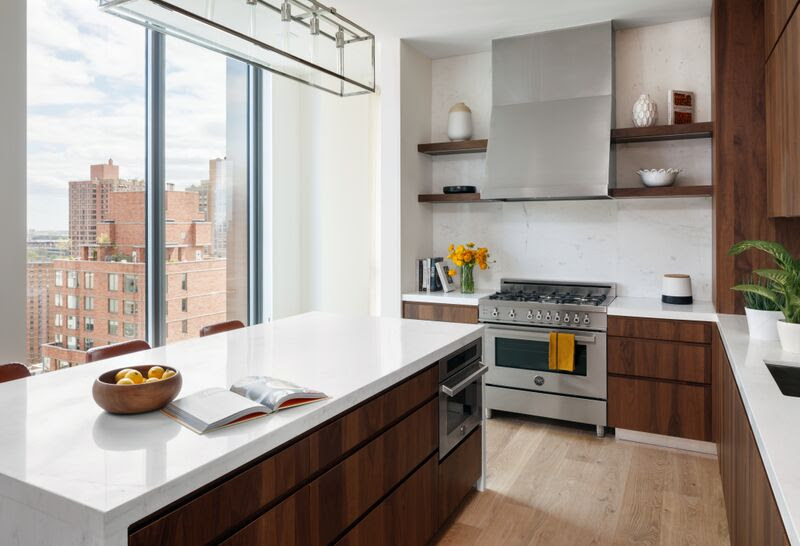
Design language
An apartment in a quality building will also reflect a thoughtful design process and function well. For example, if the layout of the kitchen feels odd, it probably is, and it may have been compromised because it was too expensive to make it right.
"You want to get the [kitchen] triangle right," Glascock says. Also, "If the door of the bathroom hits the toilet, that's awkward."
Has the living room been reduced to the size of a postage stamp to make a one bedroom a two bedroom? How big are the closets? Are there any?
Steiner suggests looking for redundancy, which when it comes to engineering is a good thing. He defines redundancy as "the inclusion of extra components that are not strictly necessary to functioning, in case of failure in other components." His prime example: two elevators, so that tenants aren't relegated to the stairwells if one elevator fails.
"Having one elevator is an easy way for buildings to save money," he says.
It's not just about the design of the individual apartment. A quality building will be thoughtful about the layout in both public communal spaces and practical areas dedicated to helping the building function. Rice offers as an example a mailroom that can accommodate packages in an organized fashion, as well as deliveries (such as groceries) requiring refrigeration.
Stephen Kliegerman, president of Halstead's property development marketing arm, points out that if a building is still under construction, common spaces are often the last ones to be completed, as the individual living spaces are a priority and some wear and tear is expected with move-ins. In that case, he recommends checking out renderings.
"Things like furniture can change, but is that space reflective of what's in the marketing materials? Does it look like the same thing you were sold?" he says.
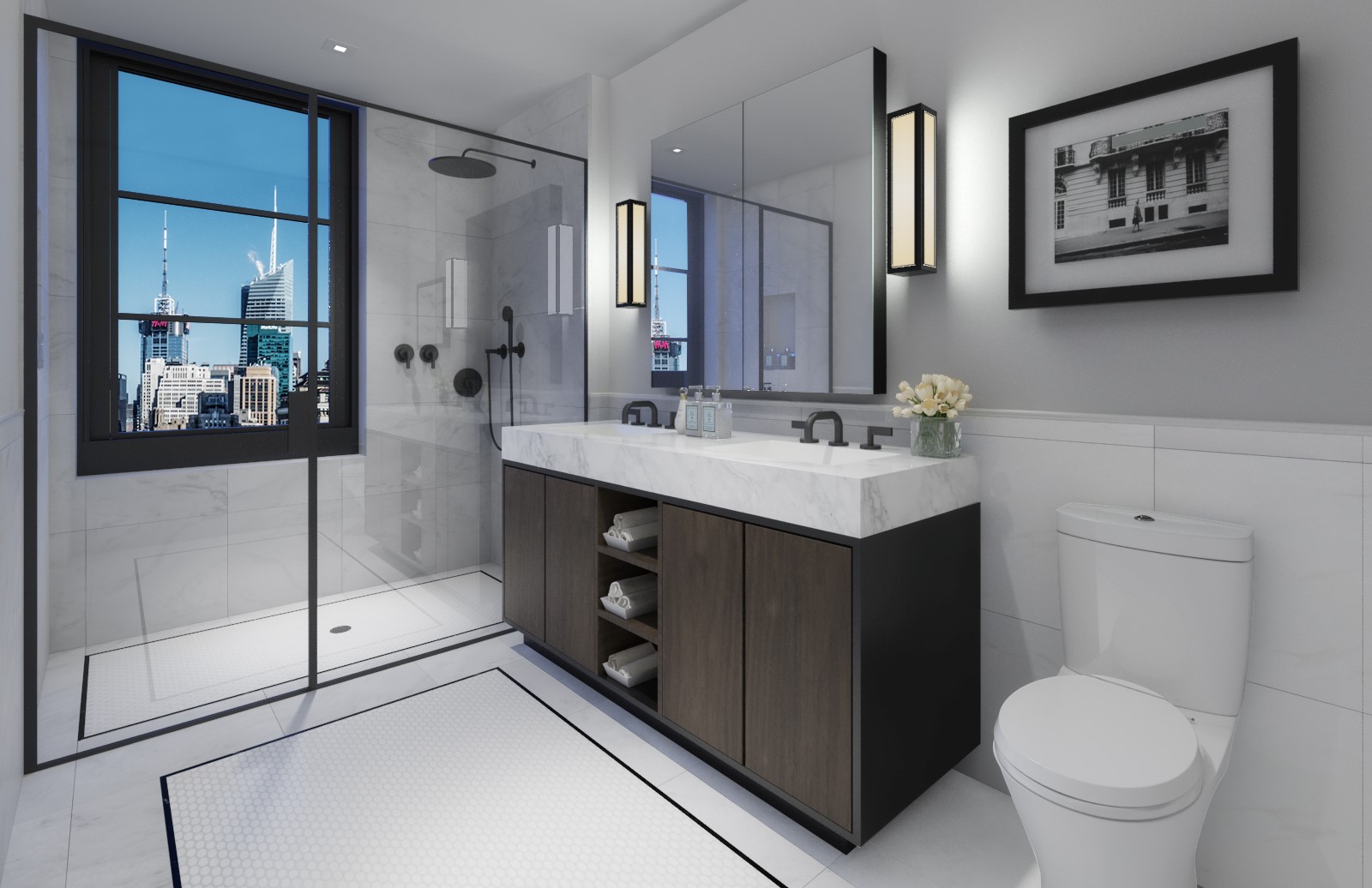
Materials and fixtures matter
Not everything is conceptual. Some aspects you can see and feel. Is the hardware on doors and cabinets substantial? Are the doors solid core doors?
"I hate flimsy doors—even on closets," Steiner says.
A telltale sign of a stock kitchen (as opposed to a kitchen custom-designed to the space) is the use of blank filler panels. Of course, you want high-quality appliances in your kitchen, and while no one brand was identified as the gold standard, Miele did come up a few times. Glascock notes that higher-end appliances will feature (or have the ability to accept) panels, instead of being limited to stainless steel.
He also names less obvious (until you really need them) fixtures and features in outdoor spaces, such as gas hookups for grills, hose-bits for water, and a surface that will drain well, as indicators of a building constructed with care.
Thoughtful aesthetics matter, too. At the Bauhaus-inspired development NOMA on West 30th Street, senior sales director Tim McCarthy points to a consistent look and quality throughout each apartment.
It's the little things
Bring your A-game to checking out the details in every room. Does the kitchen have soft-closing drawers? Are the hinges on the cabinets substantial? Are the cabinet doors level? In the bathroom (or anywhere tile is employed): are the grout lines even? Is the pattern matched well? Is there a tile askew? Is the sealant on the bathtub and shower done well? Other things to consider: Is the closet set-up more than just a rod? Are the light-plates and socket covers straight? Do all the outlets work?
Paying attention to these kinds of details is important for a number of reasons, according to Halstead's Kliegerman.
"Those are some of the things that are going to bother you for years to come, and they can be costly to fix," he says. Additionally, "If they're doing things like that well, that care most likely carried through to other areas of the job that you can't see."
Enlisting proper professionals
Goss makes the point that many nice features (large windows, HVAC, and NEST heating/cooling systems) need to be installed by people who know how to do so correctly, and that that kind of information isn't checked by the city.
"The more you have, the more there is to break," he says. "What's the warranty on the NEST system? Was it installed by a certified NEST installer? It probably wasn't. [If it breaks], now it's your problem."
Similarly, Goss would ask if a third-party waterproofing consultant was brought in, as those large windows are prone to leaks and often aren't airtight.
Many of these issues aren't on the radar of the average apartment-hunter, which is why ultimately, Goss recommends enlisting the help of an architect or contractor who knows what questions to ask.
"Bringing in someone with a construction background may be worth the cost," he says. "Otherwise you run the risk of being taken advantage of."
Track record and transparency
It's not just about what you can see, feel, hear etc. It's also about the paper trail (or lack thereof).
Rice recommends, first and foremost, getting the development's offering plan, which is on file with the state Attorney General's Office. In addition to nitty-gritty details like ceiling heights, acoustic performance, et al., the plan will identify the key players in the operation.
"Any good real estate attorney would probably recognize the names of the contractors involved," he says. If they don't, that may be a red flag, and you should do some research to check them out. Part of your due diligence should also involve finding out if the developer or contractor has ever been sued.
And while no bank will give you a loan if some very basic filings don't exist, Ross says it can't hurt to ask if the project is signed off by the Department of Buildings, if the certificate of occupancy has been acquired, and if you can get a copy of the ACP-5 form (indicating a project is not an asbestos project). It's less about the specific information requested, Ross says. Rather, "It's, can they provide the information? How organized are they?"
Responsiveness
Even with the most well-intentioned developer and contractors, things happen, and how a developer responds to requests speaks volumes.
"Problems will occur. It's construction. It's not an exact science," Kliegerman says. "How your developer responds to your concerns or problems is as important if not more... Some developers do the minimum amount [to fix things]. Others go the extra mile and want their clients to be happy, and be repeat customers. They realize a little extra work goes a long way."











